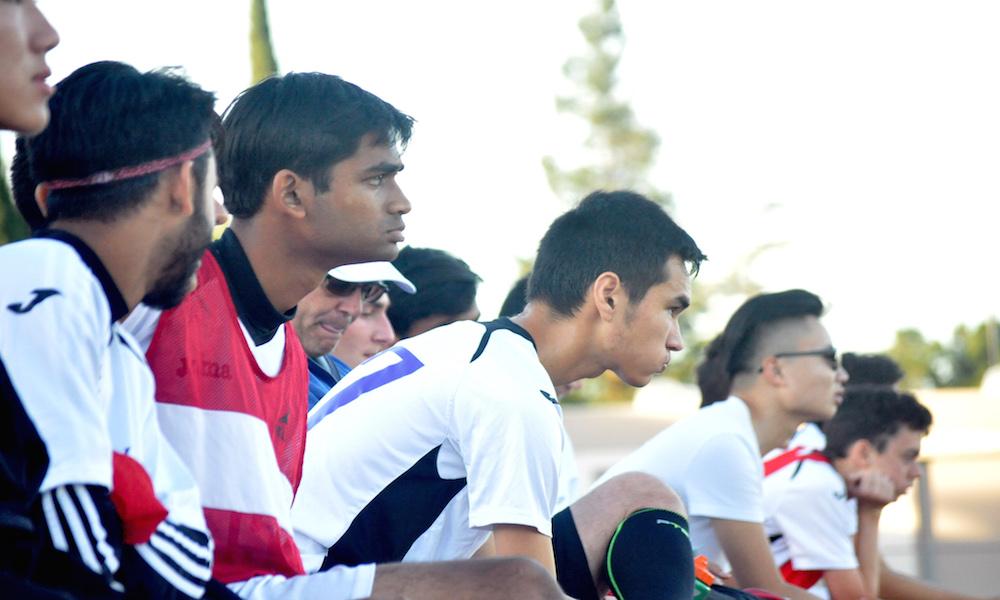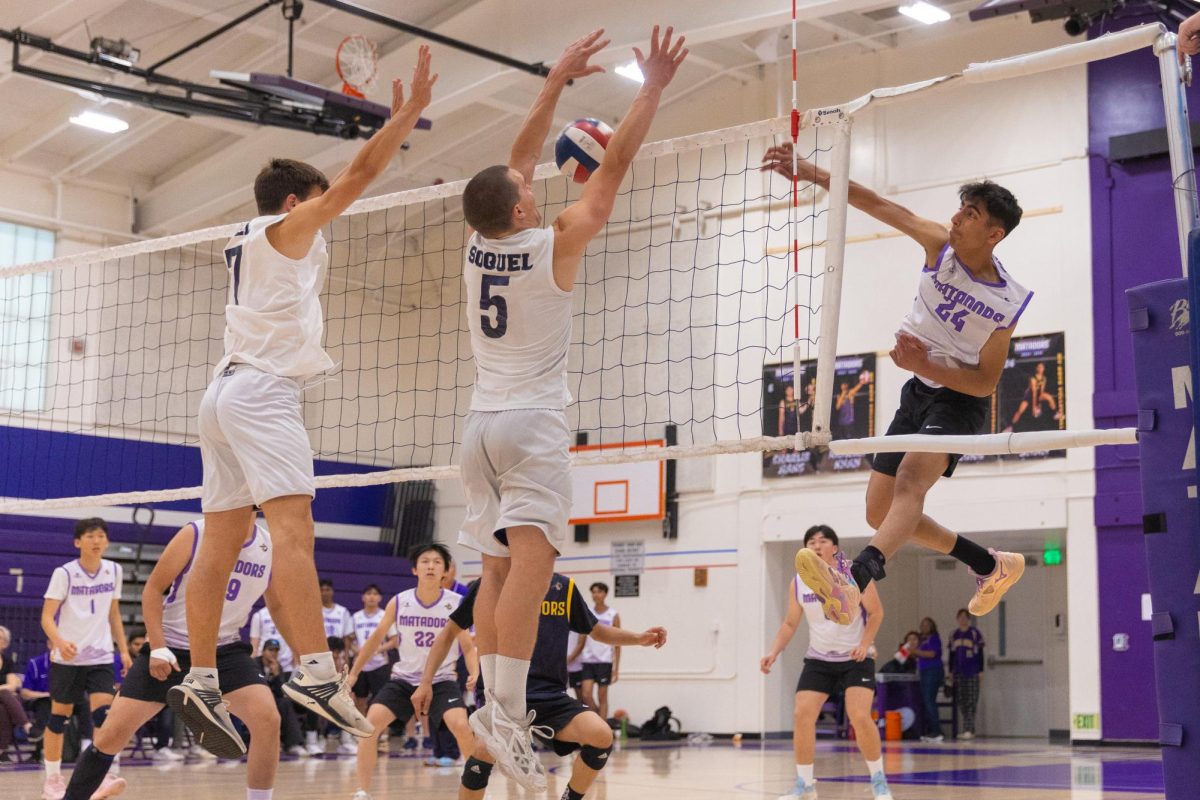It’s the first game of the 2017-18 varsity boys soccer season. As players take the field, ready to put their practice to play, new varsity coach Todd Kimble observes from the sidelines. This year, however, fans and the players on the bench aren’t the only ones watching.
Six juniors and seniors from the MVHS soccer team’s newly implemented development team watch the game as well, studying the techniques and behaviors of players on the field and listening intently to Kimble’s feedback during the game for later application during their own practice.
“The development team is partly to push the starters, and the people that are on the bench looking for minutes, but it’s also to build a program,” Kimble said. “When you build a program, it’s not about the varsity coach focusing on varsity and the frosh soph coach on frosh soph. You’ll find that we work very closely together.”
The new team consists of juniors and seniors who tried out for the varsity team but didn’t quite make the cut. However, Kimble still wanted to keep those players affiliated with the program, as he believed they had potential. His solution: the development team, a group who practices with the varsity team to gain skills that can help them make the team next year. Some, Kimble says, could even get playing time this season, if they work hard and demonstrate impressive improvement.

Kimble works closely with the JV coach and holds JV practice alongside the varsity and development teams frequently. Although there are some higher level aspects of the game that the JV team doesn’t work on, he finds that most of the concepts can be taught at any level.
“The idea is they all get the same level of training, and they have all the same opportunities,” Kimble said. “And if they continue, if they work on it on their own, and put more effort in, they will jump up [as] a team.”
As development player junior Daniel Maldonado puts it, the development team is a way to look out for the future of the program. Although development players may not have a huge impact on the varsity team’s performance this year, he says, the skills they gain from rubbing shoulders with varsity players will hopefully pay off next year.
“You get to know the people that are on the team, so if you’re on it next year, you kind of already know the gist of things,” Maldonado said.
The idea for a program incorporating a development team occurred to Kimble when he first spoke with the boys soccer team before the interest meeting, about difficulties the team faced the previous year. With a 0-8-3 league record last year, the new coach discovered that the three challenges that arose most frequently throughout the season were commitment, attendance and chemistry.
“There wasn’t really any sense of cohesiveness,” Kimble said. “So I took that and I just basically said, ‘OK, how can we create culture?’ Well, culture comes from how we do things here … I try to stay away from rules, because with rules, people want to break them more. I just say, look, this is how we do things here. If we agree on these concepts for how to do things, then the team creates the culture.”
According to Kimble, the implementation of the development team is what ties many of his ideas for a new culture and agenda together. By establishing a team with a similar skillset to that of the varsity team, Kimble hopes to use them as the primary driving force for varsity players to put in their maximum effort.
“It’s about setting an example by putting out your maximum effort and then having others try to match that,” Kimble said. “If you know that somebody’s behind you nipping at your heels, you’re going to run faster. If you know that every day you show up and you’re going to start, you’re not going to work as hard. It’s human nature … You gotta work for your minutes. It’s all about effort.”
Both Kimble and senior Arjun Mathur, who is on varsity, see this competition as a way to improve the team’s skills and legacy through the coming years.
“When starters or people who should be starting don’t show up, it gives [development players] a chance to prove themselves,” Mathur said. “They’ll be practicing with some really high level players on our roster right now, and that’ll definitely help them get better for when it’s their turn to take their team to CCS.”
Along with playing at the varsity level, development players also gain insight from Kimble’s coaching. Prior to joining the development team, most of Maldonado’s experience with soccer had been playing during summer trips to Mexico. Since he doesn’t play club soccer, he’s never had a coach to give him feedback to improve. The development team has been a great way for him to get specific advice on his game, like what foot to receive off of based on the situation, which he couldn’t get while playing recreationally.
“I don’t have the coach that’s like, ‘Oh yeah work on this,’” Maldonado said, “so it’s good because I get feedback to get better.”
However, while the development team players get to practice alongside the varsity team, they aren’t officially a part of the varsity team and will likely not get a chance to play in any league games this season.
“It was pretty sad, because you know you’re not on the team,” Maldonado said, “but it’s kind of a good opportunity to be able to play and see how people on varsity play, and kind of just get to know people.”
Although results may not be visible yet, Mathur is sure they will surface in the coming years, and wishes the development team had been started earlier.
“It’s training people who aren’t necessarily good enough to play on our roster now but they have the potential to be good enough if they put in the work,” Mathur said, “so it gives them a chance, and I think that’s a really good thing.”







